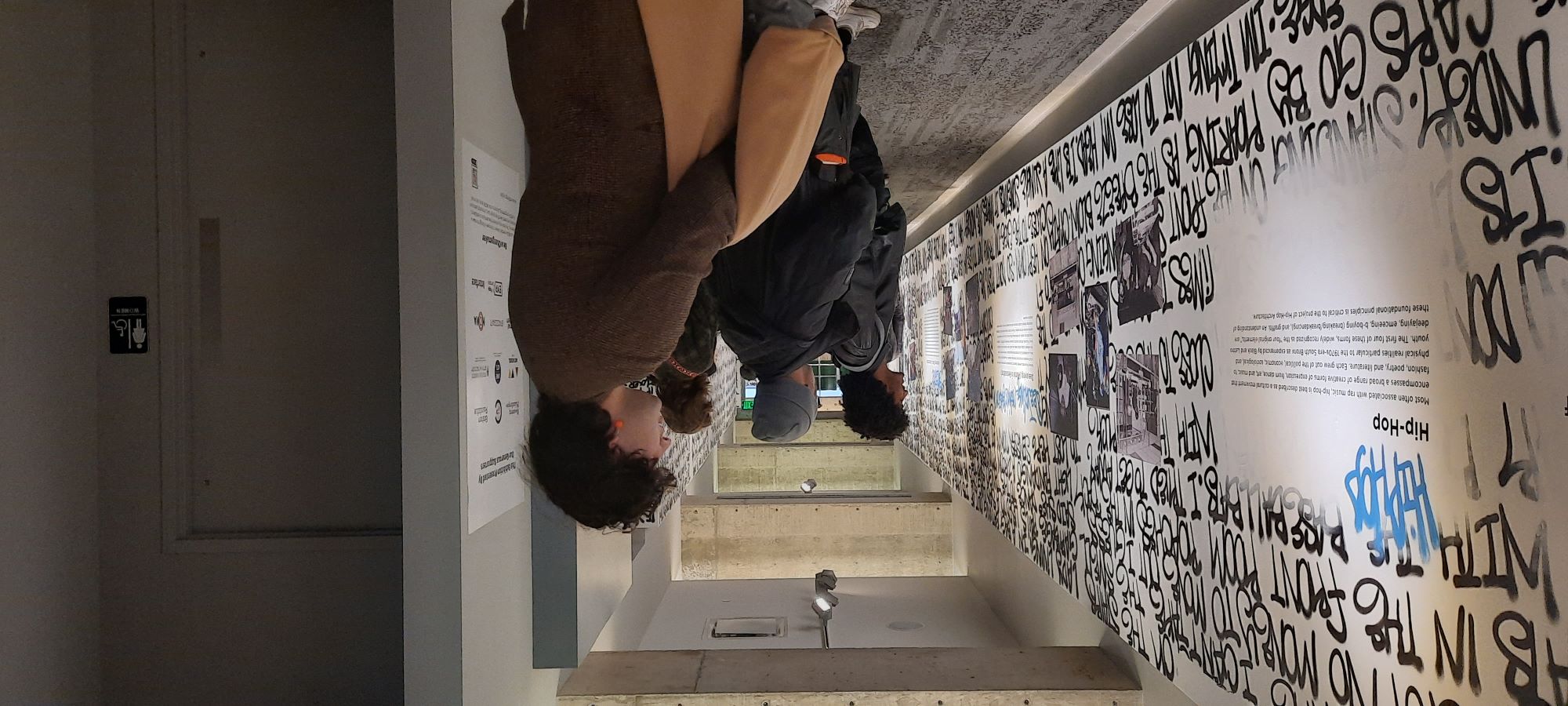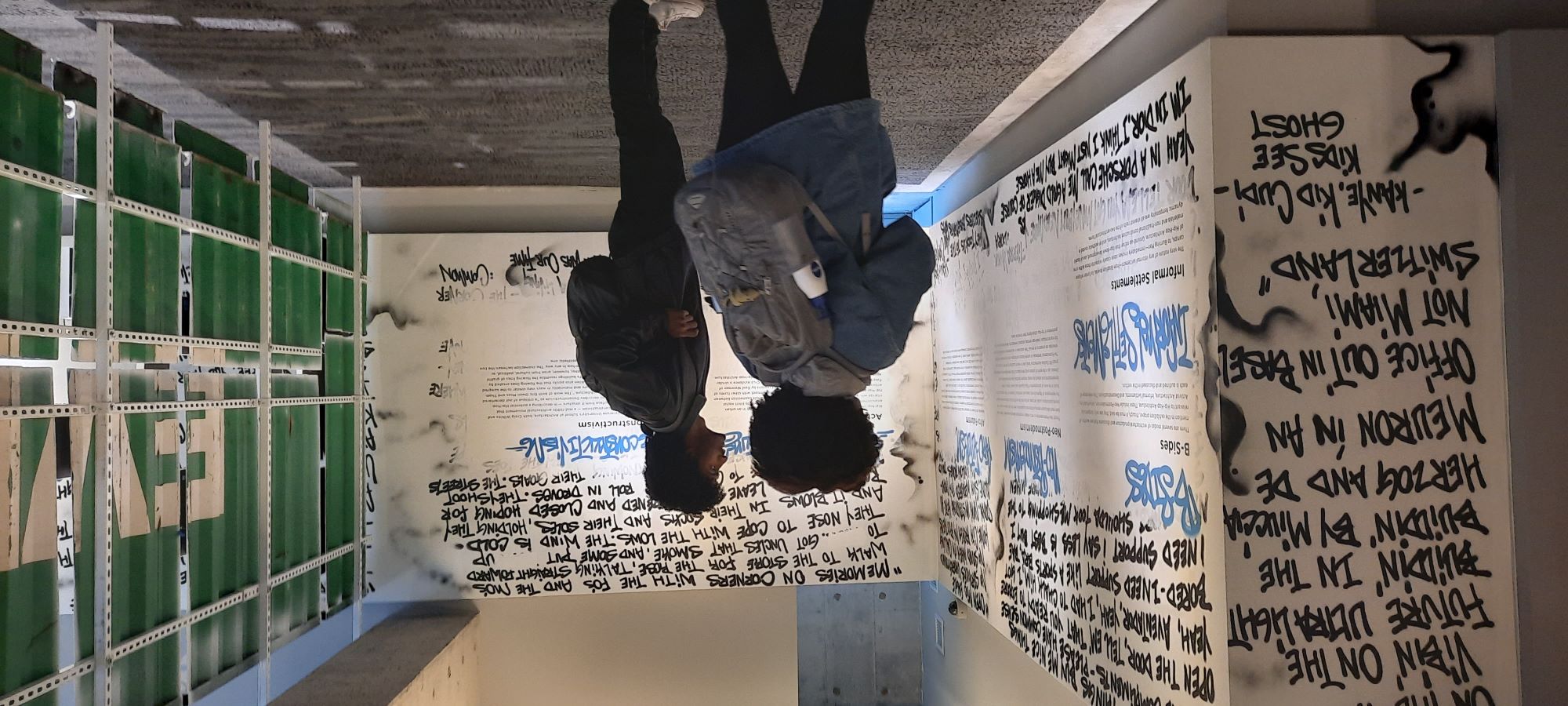Last fall, SLS Staff and students organized an outing to the Hip-Hop Architecture Exhibit at the Museum of Design Atlanta (MODA). Mark Lannaman, Graduate Research Assistant with SLS wrote the following reflection about the visit:
My trip to the Hip-Hop Architecture Exhibit at the Museum of Design Atlanta was one I will appreciate for a long time. I was able to step through time, from the inception of hip-hop in the Bronx to today, where it continues to transform alongside culture and take on new forms. Admittedly, I hadn’t quite understood the relation between the popular music genre and architecture until I toured the exhibit. The trip taught me, however, that connections can be mad everywhere.
I have an appreciation both for some good R&B and architecture; however, given my lack of technical expertise in either one, I’m not sure I’m the best person to try and relay the connection between sound and place that was presented at the exhibit. What I can say, assuredly, is that the exhibit contextualized the place of Hip-Hop within the larger music scene. Beyond that, the architecture mockups showed the potential of places that could be. I learned that communities build in cycles; the South Bronx informed the culture of the community of which Hip-Hop was born, and in turn Hip-hop then informed the community – and so on and so forth. They shaped each other, and in doing so also shaped the physical space of the community. Some of the most influential Hip-Hop musicians and songs are directly connected to the artist and their place of origin; it’s an ode to the community that develops the sound, and the sound yields part of the culture.

One of my favorites was “Shanty Megastructures” by Olalekan Jeyifous (2015). It incorporated something familiar that I’d seen before, but then added elements of Afro-futurism by creating a scene that was both functional yet still retaining its identity that it organically developed. I loved seeing the people in the drawing because to me, it showed the most part of any given place or community. It wasn’t a suggestion that anything was wrong with communities that clearly inspired the rendering, but rather a message that these communities are functional and proper for the people within them and given proper resources can thrive just fine on their own, designing community in a way that works for them.
Perhaps this is a metaphor for how the exhibit explained Hip-Hop’s Evolution: something familiar that retains an identity which you can trace back to its inception, yet undeniably different --- continuously pushing the boundaries of how something can be imagined and creating something new altogether.
